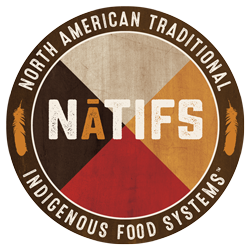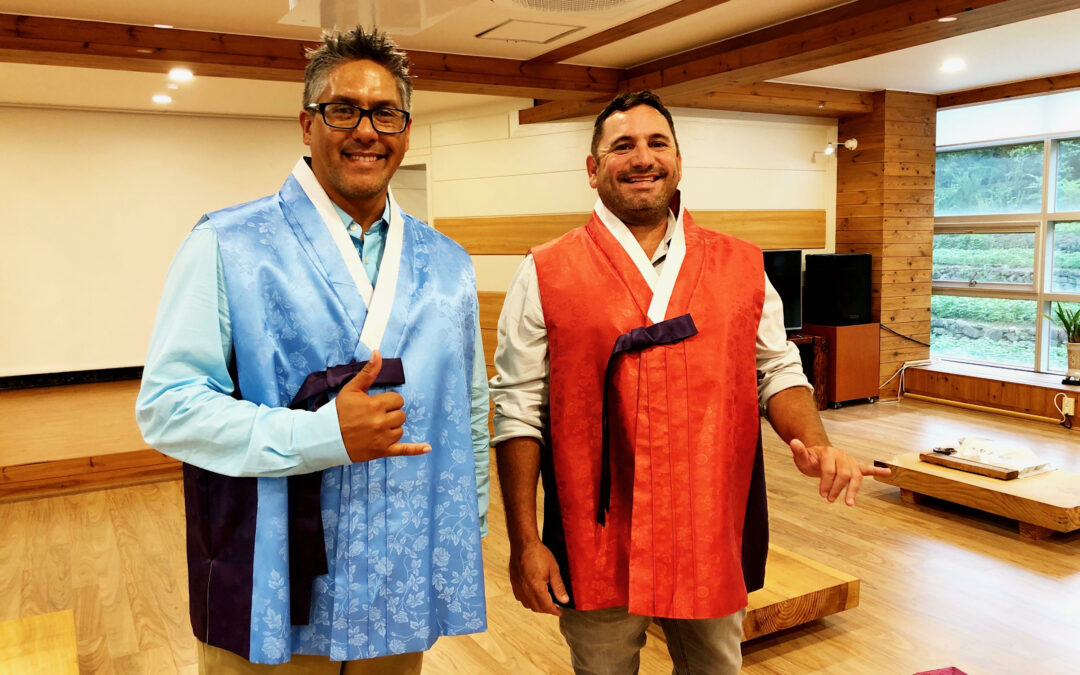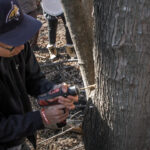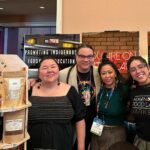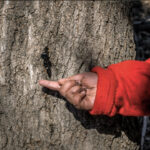The co-founder of Hawaii’s largest Native Plant nursery understands the path to saving wildlife means saving Hawaii’s plant life first
Rick Barboza was practically born to the water.
Fishing, diving, bodyboarding, surfing. As a young man, he became a sushi chef. His hometown of Waimanalo, O’ahu is one of the most beautiful places in all of Hawaii.
“The beach, Makapuu, is a perfect little bay with the sunsets and the mountains right there.”
It also has the distinction of being one of the oldest settlements of Hawaiian ancestors on all of the islands. Unfortunately, says Rick, it’s now a military base, and he, nor anyone, can visit without a military sponsor.
“And I hate that,” he says.
Fishing with his dad was one of the most treasured moments of his young life. But Rick says when they went out, they wouldn’t always catch anything. He would watch Sunday fishing shows where the guys were always catching fish around Hawaii.
“I thought, ‘What the hell?’ Why isn’t our place like this? The water looks just the same.”
By the time he was in high school, he decided he was going to dedicate his life to finding out, and took an intensive marine biology course.
“I had zero interest in doing anything other than going to the University of Hawaii and learning more about Hawaii’s ocean.”
But he was young. And the ocean led him to the forest.
“When I saw and held my first Hawaiian Hawk— that was it.”
But most of the birds he encountered were not native, and it bothered him. It bothered him a lot.
“None of them were native! It pisses me off. These should be native birds! I just get upset.” Today, only two native Hawaii forest birds are designated as having healthy populations, the ʻapapane and the Hawaiʻi ʻamakihi.
So Rick decided he would try to grow the native bird population in Hawaii. But the bureaucracy and red tape were too formidable.
“They’re all endangered species.”
In fact, Hawaii is the extinction and endangered capital of the world– 50 species of native birds are now extinct.
Many people don’t realize that Hawaii is the most remote inhabited place in the world. It takes a lot for birds to get to the islands in the first place.
“So once they get here, they want to do everything.”
And by everything, Rick means that they evolve to perfectly suit the ecology of the islands.
It was this evolution that captured Rick’s imagination and quest to save the birds.
“Any biology major learns about evolution– but evolution is based on Darwin’s study of Galapagos finches. Our finches in Hawaii blow the Galapagos away in design and function and how they evolve! We had upwards of 40 kinds of native birds from a single kind of ancestor. Each bird had a different bird design, different function.”
Functions like extra long bills designed specifically for certain kinds of plants, or different kinds of seeds. One finch evolved to be like a woodpecker.
“The more I learned, the more I was like: ‘What?!”
Native Hawaiian royalty used to wear bird feather capes during a ceremony called ahu’ula, but the construction of those capes is impossible now because of the bird’s endangered status.
Over time, Rick began to put together these pieces: to bring back the fish, and to bring back the birds, he had to bring back the plants.
Today, Rick and his partner Matt Kapaliku Schirman own the world’s largest native Hawaiian plant nursery. Native Hawaiian plants are so rare that Rick says when they began their business more than 20 years ago, their inventory could fit on a kitchen table– and even then they were the largest native Hawaiian plant nursery.
Today, Hui Ku Maoli Ola Nursery has well over 100 Native plant species– more than any other place on any of the islands. But Rick says that when he looks out at the lush green mountainscape beyond the nursery, he knows that hardly anything of that green is native– a fact that saddens him.
The delicate ecosystems around the island’s shorelines have been the hardest hit thanks to overfishing, water pollution, and redirection of freshwater to development projects. Many plants including seaweeds need freshwater to survive. All of this together means that reefs aren’t being fed properly, fish aren’t being fed properly, and birds aren’t being fed properly.
All of which, unfortunately, also translates to humans. According to Rick, there are only a handful of edible native plants left on the islands, including some ferns, berries, and fruits, all of which grow in high elevations where the landscape is less eroded.
Hui Ku Maoli Ola is currently planning a high-elevation farm to help bring back some of these edible plants.
Rick dreams that when he looks out past his He’eia, Oahu nursery, all of the green he sees will be native. He knows this is going to take time.
“But we need to reverse the trend of forcing out Hawaiians that started with the plants. We can’t change anything overnight. Took 200-plus years to get us here. It wasn’t the intent to completely screw over Hawaii. But if we have the intent to change it, hopefully, we can reverse it over the next 200 years. I don’t even need to be here.”
